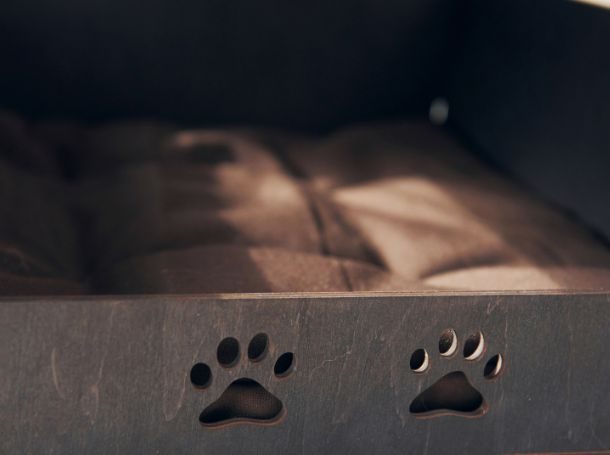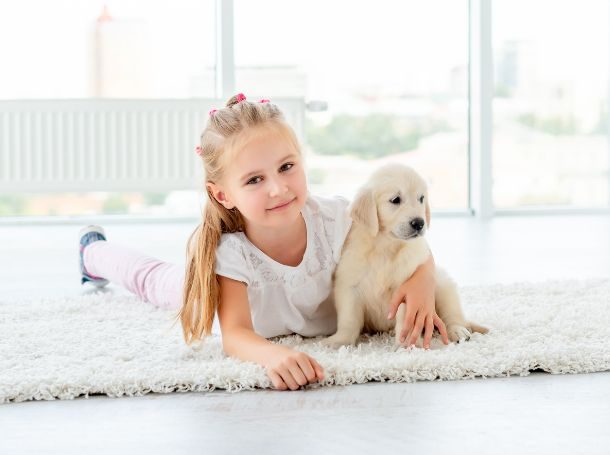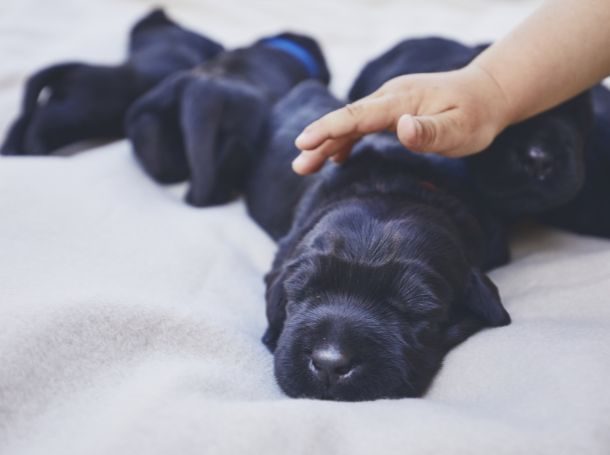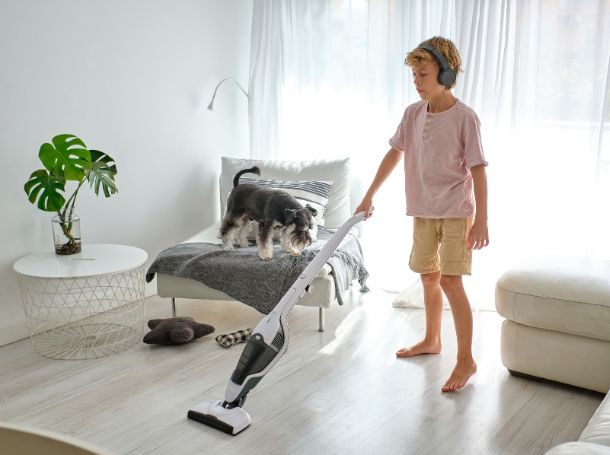
Puppy Sleep Environment Guide: Tips and Tricks for New Pet Parents
- March 3, 2025
Table of Contents
As a new puppy parent, one of the most important things you’ll need to provide for your furry friend is a comfortable and safe place to sleep. Your puppy’s sleep environment is crucial for their overall well-being, as it helps them grow, rest, and recharge. In this guide, we’ll explore everything you need to know about creating the perfect puppy sleep environment, from choosing the right bed to understanding your puppy’s sleep needs.
Why Your Puppy’s Sleep Environment Matters?
Before discussing how to create the perfect sleep environment, it’s important to understand why it matters. Like humans, puppies need a good night’s sleep to stay healthy. Adequate rest helps them grow, boosts their immune system, and improves mental and emotional well-being.
A well-designed sleep area also makes your puppy feel safe and secure. Puppies are naturally curious but seek comfort in a cozy, quiet space where they can rest without fear of disturbance. Providing a proper sleep environment helps reduce anxiety, promotes better sleep, and builds good habits for the future.
Choosing the Right Bed for Your Puppy

The bed is the most important piece of furniture in your puppy’s sleep environment. It should be comfortable, supportive, and safe. Let’s explain how to choose the perfect bed for your little one.
- Size: Choose a bed that’s appropriately sized for your puppy. It should be large enough for your puppy to stretch out comfortably but not so big that it feels lost. A bed that fits their body size will help them feel secure while sleeping.
- Support: Puppies grow fast, and their bones and joints are still developing. Look for a bed with good support to ensure proper posture. Memory foam beds are a great option because they provide even support and help with joint health.
- Materials: Puppies can be messy, so choose a bed made from durable, easy-to-clean materials. Water-resistant fabrics or removable, washable covers are great choices.
- Shape: Some puppies like to curl up in a ball while sleeping, while others prefer to stretch out. A round, donut-style bed may be ideal for curled-up sleepers, while a rectangular bed may be more comfortable for those who like to sprawl.
Creating a Calm and Quiet Sleep Space

A puppy’s sleep environment should be a peaceful and calm place. The area where your puppy sleeps should be free from distractions and noise to help them relax and fall asleep more easily.
- Choose a Quiet Spot: Try to find a quiet, low-traffic area in your home where your puppy won’t be disturbed. Avoid placing their bed near loud appliances, like washing machines, or places with a lot of foot traffic, such as the living room or kitchen.
- Consider Lighting: While puppies don’t need complete darkness to sleep, a dimly lit room can create a cozy atmosphere. Avoid bright lights or direct sunlight in their sleeping area, as this can disrupt their sleep.
- Control Noise: Puppies are sensitive to sounds. If your home is noisy, consider using a white noise machine or a soft fan to help block out distractions. This will help your puppy sleep more soundly, especially if it’s in a new environment or is still adjusting.
Temperature Control for Comfort

Just like humans, puppies need a comfortable temperature to sleep well. The ideal temperature for a puppy’s sleep environment is around 65-75°F (18-24°C). Here’s how to maintain the right temperature for your puppy:
- Keep It Cool: Puppies can easily get overheated, so make sure their sleeping area is cool, especially in warmer weather. You can place their bed in a room with good airflow or use a fan to circulate the air.
- Keep It Warm: In colder weather, puppies may need extra warmth. Consider using a heating pad designed for pets or provide a blanket to keep them warm. Just ensure the heating pad is set to a safe temperature, as overheating can be dangerous.
- Bedding: Choose bedding that helps regulate temperature. Some materials, like cotton, are breathable and great for warmer months, while thicker bedding or fleece is perfect for colder weather.
Training Your Puppy to Sleep in Their Own Space

Good sleep habits will help your puppy grow into a well-adjusted adult dog. One of the first steps in training your puppy is getting them used to sleeping in their space. Here’s how to make the transition smoother:
- Start with a Crate: A crate is a great tool for training your puppy to sleep in its own space. It gives it a sense of security and helps it feel safe. Make sure the crate is large enough for it to stand, turn around, and lie down comfortably. Never use the crate as a form of punishment.
- Positive Associations: Make the crate or bed a positive place by offering treats, toys, and praise when your puppy goes inside. You can also place a soft blanket or their favorite stuffed toy to make it feel cozy.
- Gradual Separation: If your puppy is used to sleeping in or close to you, move their bed a little farther away each night. Gradually transition them to sleeping in their designated spot.
- Consistency is Key: Stick to a consistent bedtime routine, so your puppy knows when to sleep. Try to put them in their bed at the same time each night, and avoid engaging in play or giving attention right before bedtime.
Keeping the Sleep Environment Clean and Hygienic

A clean sleep environment is essential for your puppy’s health. Puppies are more susceptible to infections and allergens, so they must keep their bed and sleep areas hygienic.
- Wash Bedding Regularly: Puppies can be messy, so regularly wash their bed and any blankets. This will keep it fresh, remove odors, and reduce dirt and bacteria buildup.
- Vacuum the Area: Regularly vacuum the area around your puppy’s bed to keep it free of dust, pet hair, and dirt. This will help reduce allergens and create a clean, safe environment.
- Disinfect Crates and Toys: If your puppy uses a crate, disinfect it regularly. You should also wash their toys, as they can collect bacteria and dirt from the floor.
Understanding Your Puppy’s Sleep Needs
Puppies need a lot of sleep, especially in their early months. On average, they sleep between 16 and 20 hours a day, though this can vary depending on their breed, age, and activity level.
- Young Puppies: Puppies younger than 12 weeks need more sleep and may nap frequently throughout the day. They’re growing rapidly at this stage and need plenty of rest to support their development.
- Older Puppies: As puppies reach 4-6 months, they may sleep less during the day but still need about 14-16 hours of rest. During this time, they’ll likely have bursts of energy and periods of play, followed by long naps to recharge.
- Recognizing Sleep Patterns: Pay attention to your puppy’s natural sleep patterns. If it seems overly tired or lethargic, it may need more sleep or be experiencing health issues. A sudden change in sleep patterns should be addressed with a veterinarian.
Common Puppy Sleep Problems and Solutions
While most puppies sleep soundly, some may experience sleep issues. Here are some common sleep problems and how to address them:
- Nighttime Whining: If your puppy whines or cries at night, it may be due to separation anxiety or an unfamiliar environment. Comfort them with soft words, but avoid picking them up, as this may reinforce the behavior. Over time, they’ll learn to sleep independently.
- Puppy Restlessness: If your puppy is restless at night, they may not have enough physical or mental stimulation during the day. Make sure to engage them in regular play, exercise, and training to burn off excess energy.
- Nighttime Potty Needs: Puppies may need to go outside for a potty break during the night, especially when they’re younger. Set a routine for nighttime potty breaks to avoid accidents and to help your puppy establish good bathroom habits.
Conclusion
Creating the perfect puppy sleep environment is essential for your puppy’s growth, health, and happiness. By choosing the right bed, setting up a quiet and comfortable space, and providing consistent training, you can help your puppy develop healthy sleep habits that will last a lifetime. Remember, every puppy is unique, so take the time to adjust their sleep environment to suit their specific needs. With patience and care, your puppy will enjoy restful nights and wake up ready for their next adventure.
The best bed for a puppy is one that offers comfort and support for their growing bones. Look for a bed that fits your puppy’s size, provides proper cushioning (like memory foam), and is made of durable, easy-to-clean materials.
Puppies need between 16 to 20 hours of sleep per day, especially in their early months. This sleep is crucial for their growth, development, and overall health.
Place your puppy’s bed in a quiet, low-traffic area of your home where they can feel safe and secure. Avoid areas with a lot of noise or distractions, such as near loud appliances or in the middle of a busy room.
Puppies may whine at night due to separation anxiety or discomfort. Ensure their sleep area is cozy, and use positive reinforcement to associate their bed with comfort and security. Gradually increase the distance from your bed if needed.
It’s a personal choice, but allowing your puppy to sleep in your bed can create dependency and may affect their sleep quality. Crate training or setting up a cozy bed in a quiet area helps build independence and encourages good sleep habits.




Leave a comment